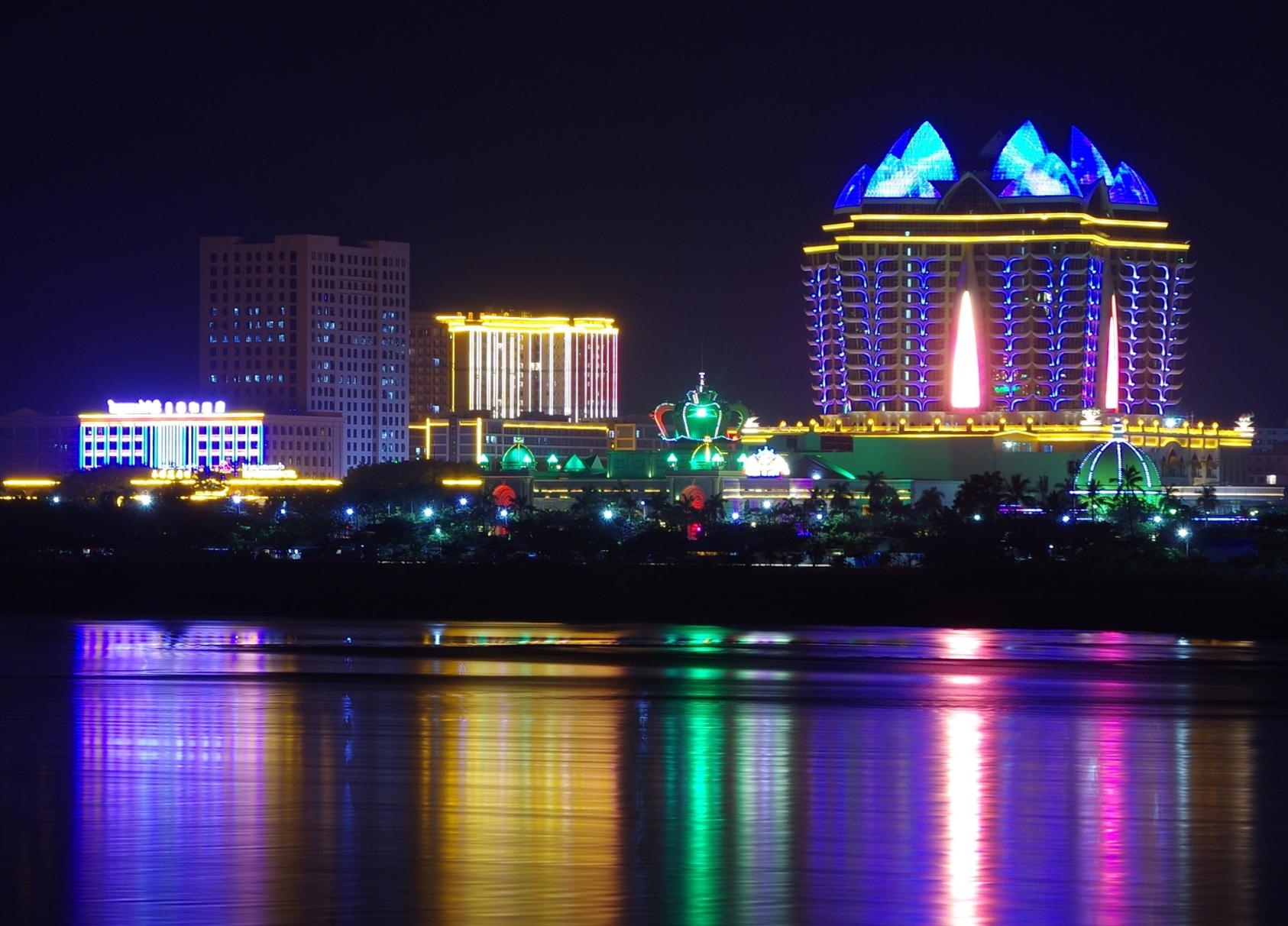
Organized Crime in Southeast Asia: A Threat to Global Security

Introduction
The United States Institute of Peace (USIP) has formed a study group to investigate the impact of organized crime on governance, local conflict, and global security in Southeast Asia. The study group aims to understand the dimensions and nature of China-origin criminal networks in the region and their global spread of online scamming. These criminal networks have expanded their power and influence to the point where they pose a direct threat to human security worldwide and the national security of the United States and its allies. Through case studies and expert analysis, the study group has gained insights into the operations of these networks, including their use of advanced technology, control over weak governments, trafficking of labor, money laundering, and attempts to conceal their criminal activities.
Key Takeaways
- Southeast Asia has become a breeding ground for transnational criminal networks originating from China, engaging in illegal online gambling and sophisticated scamming operations.
- The annual value of funds stolen worldwide by these syndicates is estimated to be around $64 billion.
- Myanmar, Cambodia, and Laos are the epicenter of the regional scamming industry, but other countries in the region also contribute to the operations of these criminal networks.
- The scamming operations involve hundreds of thousands of people who are trafficked illegally into scam compounds and forced to run online scams.
- The extensive scamming operations in Myanmar have become a key driver of the country’s internal conflict.
- Protection of the scamming industry is of strategic interest to ruling elites in Myanmar, Cambodia, and other countries due to its profitability and state involvement.
- Complex money-laundering operations are used by these criminal groups to move funds into the formal economy, risking corruption of major international financial institutions.
- The relationship between these criminal groups and the Chinese government is complex, with mixed incentives and mutual opportunity.
- The United States has become a major victim of the Southeast Asian scamming industry, with annual financial losses mounting rapidly.
Policy Options
- A holistic response is required to address the causes, effects, power, reach, and methods of operation of transnational criminal networks.
- Robust international coordination is crucial in combating these criminal networks, with the United States and China playing key roles in any international response.
- A coordinated, whole-of-government effort by the United States should focus on information collection, financial management, and law enforcement.
- An emphasis should be placed on addressing the lack of information on the scamming industry, including advancing technology, financial underpinnings, and money laundering.
- A nationwide public awareness program should be conducted by the US government to educate citizens about scamming methods and protect them from fraudulent schemes.
PHOTO: The Kings Romans Casino, shown here on December 5, 2020, is located along the Mekong River in Laos. During the COVID-19 pandemic, empty casinos in Southeast Asia pivoted to housing online scam operations. (Photo by Nongwean3/Shutterstock)
The views expressed in this publication are those of the author(s).
SDGs, Targets, and Indicators
-
SDG 16: Peace, Justice, and Strong Institutions
- Target 16.4: By 2030, significantly reduce illicit financial and arms flows, strengthen the recovery and return of stolen assets, and combat all forms of organized crime
- Indicator 16.4.1: Total value of inward and outward illicit financial flows (in current United States dollars)
-
SDG 8: Decent Work and Economic Growth
- Target 8.7: Take immediate and effective measures to eradicate forced labor, end modern slavery and human trafficking, and secure the prohibition and elimination of the worst forms of child labor
- Indicator 8.7.1: Proportion and number of children aged 5-17 years engaged in child labor, by sex and age group
-
SDG 10: Reduced Inequalities
- Target 10.7: Facilitate orderly, safe, regular, and responsible migration and mobility of people, including through the implementation of planned and well-managed migration policies
- Indicator 10.7.1: Recruitment cost borne by employee as a proportion of monthly income earned in country of destination
-
SDG 11: Sustainable Cities and Communities
- Target 11.3: By 2030, enhance inclusive and sustainable urbanization and capacity for participatory, integrated, and sustainable human settlement planning and management in all countries
- Indicator 11.3.1: Ratio of land consumption rate to population growth rate
-
SDG 16: Peace, Justice, and Strong Institutions
- Target 16.3: Promote the rule of law at the national and international levels and ensure equal access to justice for all
- Indicator 16.3.1: Proportion of victims of violence in the previous 12 months who reported their victimization to competent authorities or other officially recognized conflict resolution mechanisms
Table: SDGs, Targets, and Indicators
| SDGs | Targets | Indicators |
|---|---|---|
| SDG 16: Peace, Justice, and Strong Institutions | Target 16.4: By 2030, significantly reduce illicit financial and arms flows, strengthen the recovery and return of stolen assets, and combat all forms of organized crime | Indicator 16.4.1: Total value of inward and outward illicit financial flows (in current United States dollars) |
| SDG 8: Decent Work and Economic Growth | Target 8.7: Take immediate and effective measures to eradicate forced labor, end modern slavery and human trafficking, and secure the prohibition and elimination of the worst forms of child labor | Indicator 8.7.1: Proportion and number of children aged 5-17 years engaged in child labor, by sex and age group |
| SDG 10: Reduced Inequalities | Target 10.7: Facilitate orderly, safe, regular, and responsible migration and mobility of people, including through the implementation of planned and well-managed migration policies | Indicator 10.7.1: Recruitment cost borne by employee as a proportion of monthly income earned in country of destination |
| SDG 11: Sustainable Cities and Communities | Target 11.3: By 2030, enhance inclusive and sustainable urbanization and capacity for participatory, integrated, and sustainable human settlement planning and management in all countries | Indicator 11.3.1: Ratio of land consumption rate to population growth rate |
| SDG 16: Peace, Justice, and Strong Institutions | Target 16.3: Promote the rule of law at the national and international levels and ensure equal access to justice for all | Indicator 16.3.1: Proportion of victims of violence in the previous 12 months who reported their victimization to competent authorities or other officially recognized conflict resolution mechanisms |
Analysis
-
Which SDGs are addressed or connected to the issues highlighted in the article?
The issues highlighted in the article are connected to the following SDGs:
- SDG 16: Peace, Justice, and Strong Institutions
- SDG 8: Decent Work and Economic Growth
- SDG 10: Reduced Inequalities
- SDG 11: Sustainable Cities and Communities
-
What specific targets under those SDGs can be identified based on the article’s content?
Based on the article’s content, the following specific targets can be identified:
- Target 16.4: By 2030, significantly reduce illicit financial and arms flows, strengthen the recovery and return of stolen assets, and combat all forms of organized crime
- Target 8.7: Take immediate and effective measures to eradicate forced labor, end modern slavery and human trafficking, and secure the prohibition and elimination of the worst forms of child labor
- Target 10.7: Facilitate orderly, safe, regular, and responsible migration and mobility of people, including through the implementation of planned and well-managed migration policies
- Target 11.3: By 2030, enhance inclusive and sustainable urbanization and capacity for participatory, integrated, and sustainable human settlement planning and management in all countries
- Target 16.
Copyright: Dive into this article, curated with care by SDG Investors Inc. Our advanced AI technology searches through vast amounts of data to spotlight how we are all moving forward with the Sustainable Development Goals. While we own the rights to this content, we invite you to share it to help spread knowledge and spark action on the SDGs.
Fuente: usip.org

Join us, as fellow seekers of change, on a transformative journey at https://sdgtalks.ai/welcome, where you can become a member and actively contribute to shaping a brighter future.






